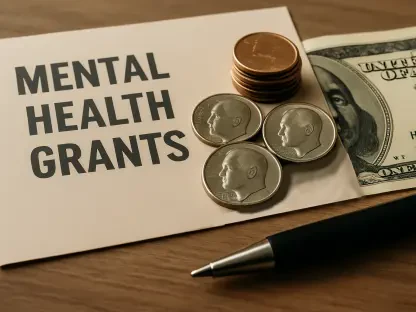What happens when the gateway to higher education becomes a political battlefield? In 2025, college admissions are no longer just about grades and essays—they’re at the epicenter of a national debate over fairness, identity, and government control, leaving students, educators, and policymakers grappling with the consequences of the Trump administration’s bold moves to overhaul admissions practices. From sweeping data collection mandates to the dismantling of diversity programs, these changes are redefining who gets a shot at a degree and under what rules.
This story matters because college admissions shape more than individual futures; they reflect society’s values and priorities. With new federal policies pushing for race-blind processes and cracking down on diversity initiatives, the stakes couldn’t be higher. These shifts influence not only campus demographics but also broader conversations about equity and access in an increasingly divided nation. The following sections delve into the specifics of these reforms, the voices caught in the crossfire, and what can be done to navigate this turbulent landscape.
Why College Admissions Are in the Spotlight
The debate over college admissions has reached a boiling point, driven by aggressive federal intervention. The Trump administration’s policies are challenging long-standing practices, questioning how much influence the government should wield over who enters higher education. Campuses across the country are on edge as new rules and legal battles unfold, turning application processes into a litmus test for bigger ideological clashes.
At the heart of this scrutiny is a push to redefine fairness. Critics argue that government overreach risks undermining institutional autonomy, while supporters claim it’s a necessary correction to perceived biases in admissions. This tension is palpable, as universities struggle to align with federal mandates without sacrificing their core missions, setting the stage for a deeper look into the cultural and political forces at play.
The High Stakes of Admissions Reform in a Divided Time
Beyond the logistics of applications, college admissions have morphed into a symbol of America’s cultural rifts. The administration’s emphasis on race-neutral policies aligns with a conservative agenda to dismantle diversity, equity, and inclusion (DEI) frameworks, framing them as divisive. This approach has ignited pushback from those who see such moves as a rollback of hard-won progress toward equal representation in education.
The ripple effects are profound, touching on issues of free expression and societal equity. Students and educators fear that curbing DEI efforts could narrow perspectives on campus, while state-level policies amplify federal priorities, creating a patchwork of restrictions. Understanding these dynamics is critical, as they shape not just college demographics but also how the nation confronts systemic inequality in a polarized era.
Trump’s Policies Redefining the Admissions Landscape
Specific actions by the Trump administration are altering the rules of college admissions in striking ways. A prominent initiative from the U.S. Department of Education involves collecting detailed data on applicants’ race and sex, a process estimated to burden higher education with 740,000 additional work hours. This move underscores a commitment to enforcing the Supreme Court’s ban on race-based admissions, prioritizing strict oversight over institutional flexibility.
Elsewhere, military academies like West Point have ceased diversity-focused admissions practices under federal directives, reflecting a broader anti-DEI stance. At the state level, Alabama’s ban on DEI offices and Iowa’s mandate for “balanced” teaching on controversial topics further illustrate how federal influence cascades downward. Backed by legal challenges from groups like Students for Fair Admissions, these policies aim to erase race-conscious frameworks, though they often leave colleges wrestling with unclear guidelines and heightened administrative strain.
The impact of these changes is already visible, raising alarms about inclusivity. Legal battles and vague regulations are forcing institutions to rethink their approaches, often at the cost of programs designed to support underrepresented groups. This multi-pronged effort signals a deliberate shift toward a system where demographic factors play no role, even as concerns mount over the loss of diversity on campuses nationwide.
Voices from Campuses and Courtrooms Speak Out
Resistance to these policy shifts is growing louder, with diverse perspectives highlighting the real-world fallout. In Alabama, a federal judge upheld a law banning DEI offices, despite faculty and students voicing fears over stifled classroom discussions. One professor captured the frustration, stating, “There’s no clarity on what’s permitted, leaving us to second-guess every lesson.”
At George Washington University, targeted by the administration for alleged inaction on antisemitic harassment during a 2024 protest, officials defended their response by pointing to police intervention to clear encampments and ensure safety. Meanwhile, legal experts weigh in on an antitrust lawsuit against nearly three dozen selective colleges and platforms like Common App, with one scholar noting, “This exposes a system skewed against affordability, beyond just ideological debates.” These accounts reveal a clash between compliance with new rules and the preservation of campus values, painting a picture of uncertainty and contention.
Adapting to Change: Strategies for Colleges and Applicants
Navigating this evolving environment demands proactive steps from both institutions and students. Colleges must strike a delicate balance between adhering to federal mandates and upholding their commitment to inclusive spaces. Transparent communication about policy updates, coupled with robust legal support to address risks like antitrust lawsuits or harassment claims, can help mitigate confusion and conflict.
For applicants, the shift to race-blind admissions means focusing on personal strengths and achievements in their applications, rather than demographic factors. Staying informed about state and federal changes, and tapping into resources from advocacy organizations, is essential for understanding the new criteria. Engaging with policymakers through coalitions can also push for clearer guidelines, such as those surrounding Iowa’s “balanced teaching” rules, ensuring voices are heard in this transformative period.
Both groups stand to benefit from collective action and vigilance. By fostering dialogue with stakeholders and advocating for transparency, colleges and students can better weather the challenges posed by these reforms. Leveraging networks and staying updated on legal developments will be key to maintaining resilience amid the ongoing overhaul of higher education admissions.
Reflecting on a Shifted Landscape
Looking back, the sweeping changes driven by the Trump administration marked a turning point for college admissions, embedding federal priorities deep into the fabric of higher education. The push for race-blind policies and the rollback of DEI initiatives reshaped how institutions approached access and equity, often amid legal and cultural friction. Campuses adapted under pressure, while students recalibrated their strategies to fit a new reality.
Moving forward, the focus shifted to finding sustainable solutions that balanced compliance with inclusivity. Institutions began exploring innovative ways to support diverse student bodies without violating mandates, such as emphasizing socioeconomic factors in admissions. Applicants, too, found strength in advocacy, joining forces with peers to demand clarity and fairness in the process. The path ahead demanded ongoing dialogue and adaptability, ensuring that the pursuit of education remained a shared, equitable goal despite the challenges encountered.









